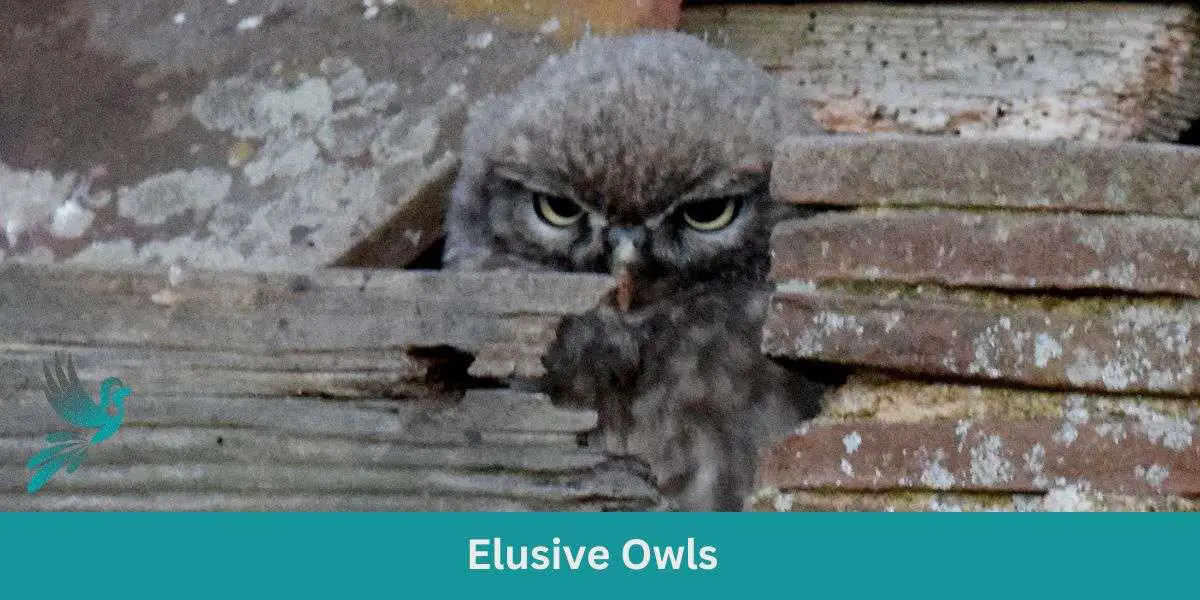Owls have long captured human imagination with their haunting calls and mesmerizing eyes. Yet, not all owls perch on window ledges or announce their presence with distinctive hoots. Some species remain enigmatic, rarely seen and seldom heard, but endlessly fascinating.
Let’s journey into the world of the elusive owls, hidden gems of the avian realm.
Profiles of Some of the Most Elusive Owls:
- Forest Owlet (Heteroglaux blewitti):
- Once believed extinct, this small owl was rediscovered in the forests of central India. It’s now critically endangered with only a few sightings in the past decades.
- Blakiston’s Fish Owl (Bubo blakistoni):
- Found in the dense forests of eastern Russia, Japan, China, and North Korea, this owl is the world’s largest fish owl and relies on undisturbed riparian habitats.
- Sumba Boobook (Ninox sumbaensis):
- Native to the island of Sumba in Indonesia, this owl remains poorly known due to its restricted range and the island’s limited accessible habitats.
- Rinjani Scops Owl (Otus jolandae):
- Found only on the Indonesian island of Lombok, this owl was described as a new species as recently as 2013, showcasing just how much we still have to learn about owls.
Reasons for Their Elusiveness:
- Habitat Specialization:
- Many elusive owls are specialists, living in specific niches like dense forests or isolated islands, making sightings rare.
- Nocturnal Behavior:
- Being active mainly at night and having muted calls, some owls go unnoticed even in populated areas.
- Camo and Quietude:
- Their feathers often provide perfect camouflage against tree barks or shadows, and many have silent flight, further adding to their stealth.
Conservation Implications:
- Limited Knowledge:
- The elusive nature of these owls means that our understanding of their status, behavior, and needs is often limited.
- Threatened Habitats:
- Many of these owls live in habitats that are under threat from deforestation, climate change, or human encroachment.
- Awareness and Action:
- Highlighting these less-known species is crucial for conservation efforts, as protecting them can also safeguard a host of other species sharing their habitats.
The world of elusive owls beckons with mysteries waiting to be unraveled. While these shadowy figures might be hard to spot, their importance in the tapestry of nature is undeniable. As we continue to learn more about them, we’re reminded of the myriad wonders still hidden in the wild, awaiting discovery and understanding.
How to Spot Elusive Owls
1. Research Your Target:
- Study Up: Before venturing out, research the specific owl species native to your area or the region you’re visiting. Knowing their habits, habitats, and calls will guide your search.
- Migration Patterns: Some owls are migratory. Be aware of their patterns to increase your chances of sightings during specific seasons.
2. Time It Right:
- Golden Hours: Dusk and dawn are often the best times to spot owls as they are most active during these twilight hours.
- Moonlit Nights: Some owls hunt more actively on moonlit nights, making these ideal times for observation.
3. Quiet is Key:
- Stealth Mode: Move silently and minimize disturbances. Loud noises can scare off or alert owls.
- Dress Appropriately: Wear muted, non-reflective clothing to blend into the surroundings.
4. Use Your Ears:
- Owl Calls: Familiarize yourself with the calls of the owls you’re trying to spot. Sometimes, you’ll hear an owl before you see it.
- Listening Devices: A parabolic microphone can amplify distant sounds, helping you locate owls from their calls.
5. Explore the Right Habitats:
- Wooded Areas: Many owl species prefer dense forests or woodlands.
- Water Sources: Near lakes or rivers, you might find species that specialize in hunting aquatic prey.
6. Look for Telltale Signs:
- Pellets: Owls regurgitate indigestible parts of their prey. Finding these pellets can indicate an owl’s presence or roosting site.
- White Wash: This term refers to owl droppings, which are often visible on the ground or tree trunks below their roosting spots.
7. Employ Technology:
- Spotting Scopes: These can help in observing distant owls without disturbing them.
- Night Vision or Thermal Binoculars: These can be invaluable for spotting owls in the dark.
8. Join Guided Owl Prowls:
- Expert Guidance: Local birdwatching or nature groups often organize owl-spotting trips, providing expert guidance and higher chances of successful sightings.
The journey to spot an elusive owl is as much about patience and persistence as it is about preparation. Embrace the adventure, savor the anticipation, and remember – sometimes, it’s not just about the destination, but the stories and experiences along the way. Whether you catch a fleeting glimpse of an owl or spend an evening serenaded by their calls, the magic of the wild is always around the corner.
Some owls, like the ones featured in Elusive Owls, remain a mystery due to their secretive nature. Expand your understanding by exploring the unique Scops Owl or the hauntingly beautiful Tawny Owls. The world of the Long-Eared Owl also promises captivating insights. To encompass the entire realm of these raptors, our Guide to Owls is your best resource.



Leave a Reply
You must be logged in to post a comment.